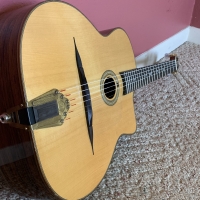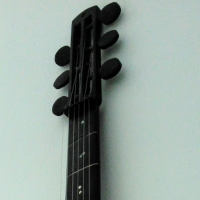DjangoBooks.com
Welcome to our Community!
Categories
- 20K All Categories
- 1.1K General
- 476 Welcome
- 59 Archtop Eddy's Corner
- 146 CD, DVD, and Concert Reviews
- 384 FAQ
- 26 Gypsy Jazz Italia
- 26 Photos
- 202 Gypsy Picking
- 21 Unaccompanied Django
- 15 Pearl Django Play-Along Vol.1
- 17 Gypsy Fire
- 45 Gypsy Rhythm
- 1.4K Gypsy Jazz University - Get Educated
- 130 Gypsy Jazz 101
- 224 Repertoire
- 218 History
- 707 Technique
- 51 Licks and Patterns
- 6 Daniel Givone Manouche Guitare Method Users Group
- 20 Eddie Lang Club
- 1.3K Gypsy Jazz Gear
- 801 Guitars, Strings, Picks, Amps, Pickups and Other Accessories
- 457 Classifieds
- 49 Recording
- 62 Other Instruments
- 18 Violin
- 5 Mandolin
- 22 Accordion
- 7 Bass
- 10 Woodwinds
- 347 Gypsy Jazz Events
- 143 North America
- 109 Europe
- 95 International
Who's Online (0)
Min 6 "position" Arps.
 lukejazz
Natchitoches, Louisiana✭✭✭ Dunn Belleville, Dupont MD50
lukejazz
Natchitoches, Louisiana✭✭✭ Dunn Belleville, Dupont MD50
Hello All - For whatever reason I never was always getting confused about min6 inversions so I created a worksheet to help me out. I thought I'd share it in case anyone else might like to have it.
I understand it's not really the traditional "horizontal" approach to the arpeggios but it has helped me out so I thought I'd share. Of course ignore the fingerings and play them as you prefer.














Comments
Could be useful for people who want to learn to play "in position", thanks. Incidentally, this is actually one of the easiest arps to play with a traditional "horizontal" approach, because you get 2 notes per string. So, gypsy picking = alternate picking :)
Works on 2's (Em7b5) and 5's (C7) too!
Luke, what software did you use to make those charts? Did you do the same for M6 or M7? Thanks
Wim, on those vertical arps I tend to add the 4th on the way back down (from high E to low E) to facilitate the 2 note per string thing (like you mention on the horizontal arps) on faster tempos to avoid the double down stroke since I'm speed challenged.
"Luke, what software did you use to make those charts? Did you do the same for M6 or M7? Thanks"
Hi Bones,
It's actually pretty involved. I use a technique I developed to put together a book. Musical examples are done in Finale. Everything else is done in Adobe Products. Diagrams are in Illustrator. I convert the music and diagrams into pdf's and png's with Photoshop, then assemble the whole thing with InDesign.
I haven't done the same for other chord qualities. I'll see if I can look at doing that. Of course it's a good exercise to do the m6 in one inversion, then in the same inversion change one note to get the next inversion in what I think of as "harmonic evolutions" which is how I usually teach chords.
So for instance when you get comfortable playing, let's say, min6 in the 1st inversion, then exchange the 6 note for a b7 get a min7. Then dom7 by exchanging the b3 for a natural 3, Maj7 by changing b7 for natural 7 etc. Or just min6 to Maj6 by exchanging the b3 for a natural 3. To my thinking mastering one inversion at a time would be the way to go.
Also I like to have my students take blank chord grids and draw the diagrams out themselves in order to make it "stick" better. Kind of like transcribing. It's always better to do it yourself. I'll attach some blank grids for your convenience.
Have fun!
Luke
Thanks Luke, I'll print out the grid and do it old skool with a pencil.